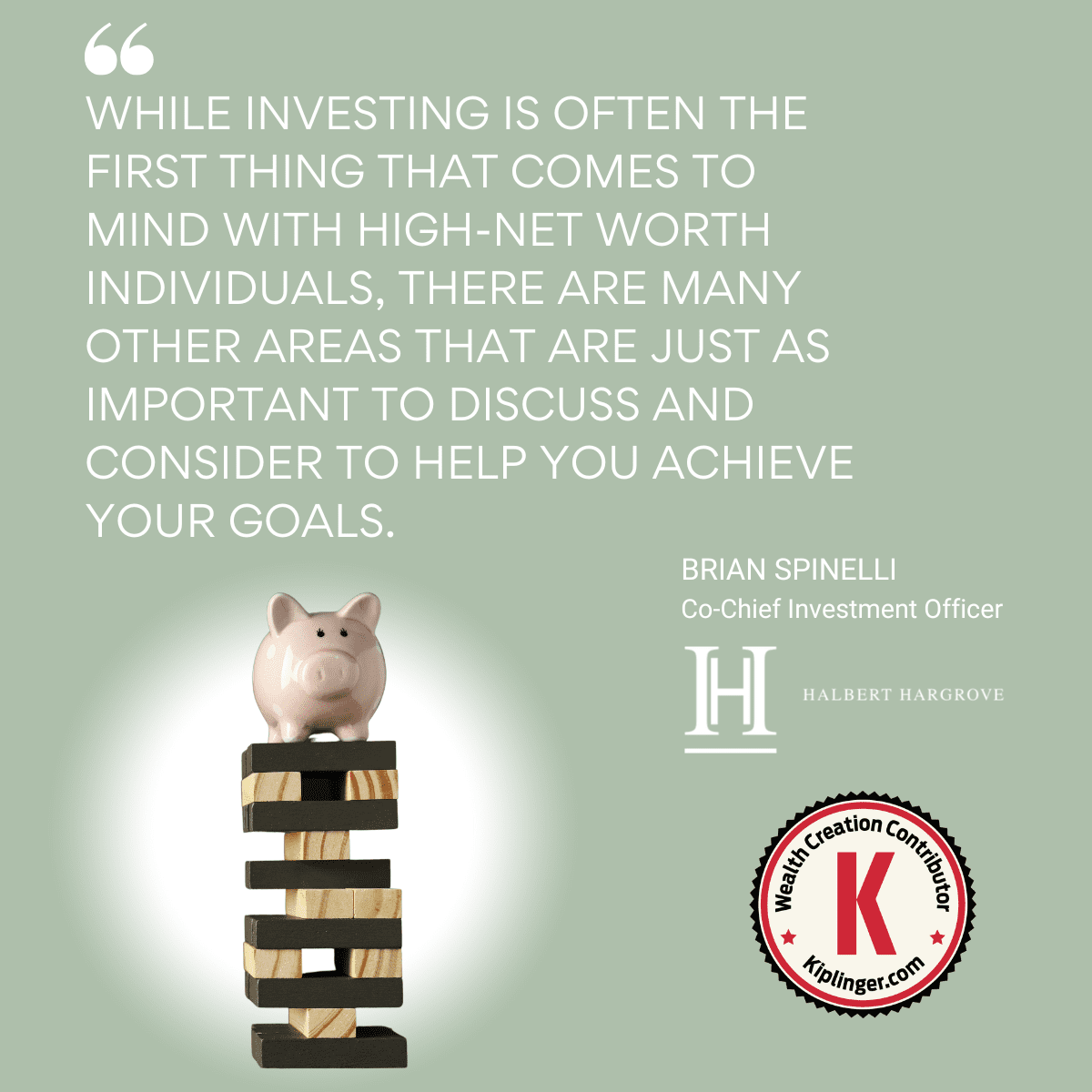Even if you’re not a high-net-worth individual, these strategies for long-term investing, tax management and more can be very helpful to get you on track to being an HNWI.
By Brian Spinelli, CFP®, AIF®, Co-Chief Investment Officer as featured in Kiplinger
As an adviser to high-net-worth individuals (HNWIs), I stress to our clients that investing is just one of many things that they need to consider as a part of their overall financial planning.
An HNWI is loosely defined as someone with liquid assets of at least $1 million, and the U.S. notably has the highest number of HNWIs in the world.
While I want to share five core areas that HNWI investors should focus on, this is in no way an exhaustive list. Individual circumstances and goals are not uniform.
Also, a lot of the following is not just for HNWIs.
Many of these areas should be considered even for those just starting out on their path to becoming an HNWI.
If having lots of liquid cash is your goal, then ensuring you’re paying attention to these areas is a great place to see if you’re on track for financial peace of mind.
Diversification and long-term investing
We all hear anecdotal stories of how a single investment created a windfall event and made a lot of money in a short period of time. A very contemporary example is if someone bought Nvidia stock after it was cut in half last year, only to see it skyrocket in recent weeks.
Concentration can lead to big investment returns, but it can also cut both ways.
If you’re getting started on your saving and investing journey, you will likely have the ability to concentrate your investment funds. This could be starting a business or investing in only a few areas. If there is a setback or significant loss, the idea is that you would have time to make it up, and it was with money that didn’t jeopardize your well-being indefinitely.
Many HNWIs have hit a point in life with their pool of money where taking a large step back would result in relatively large dollar losses that would take a very long time to earn back. For example, let’s say a person is approaching retirement with million, and they lose 50% of it.
That’s 0,000 and a significant amount to try to earn and save again.


